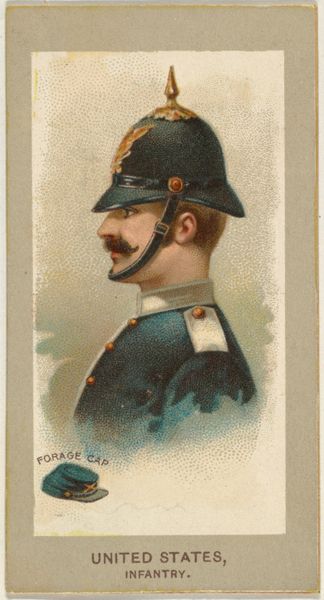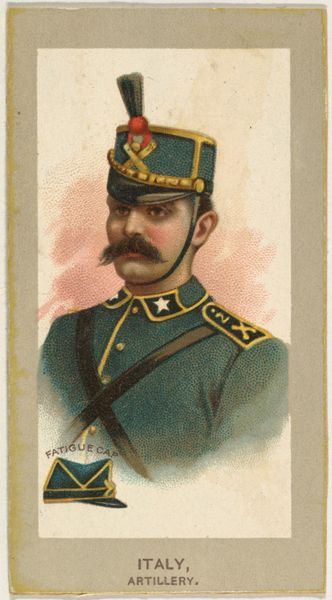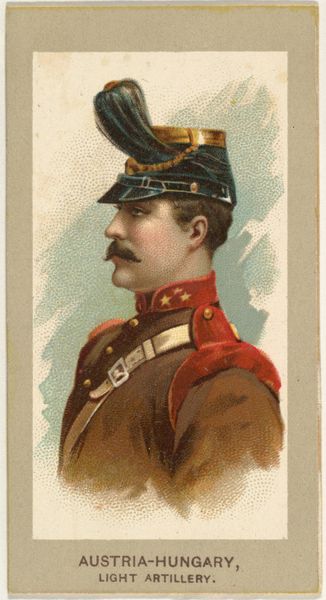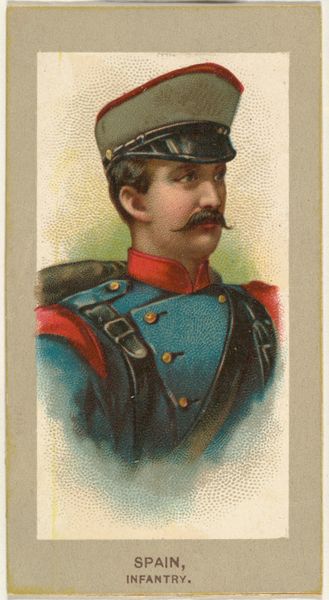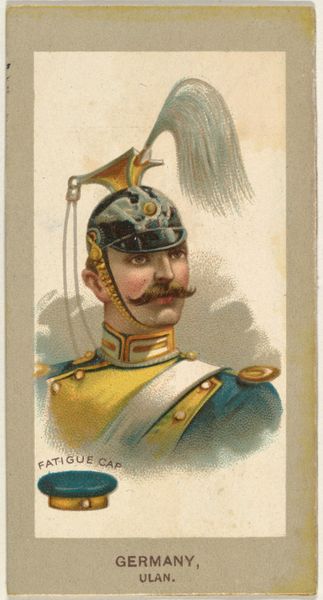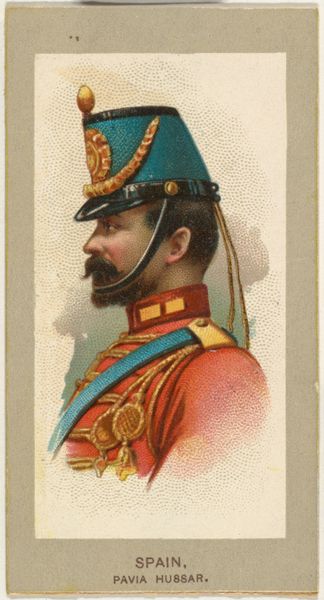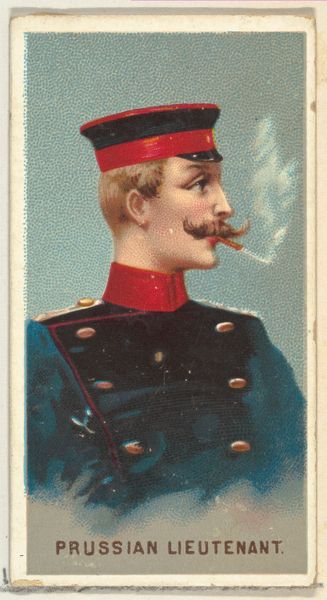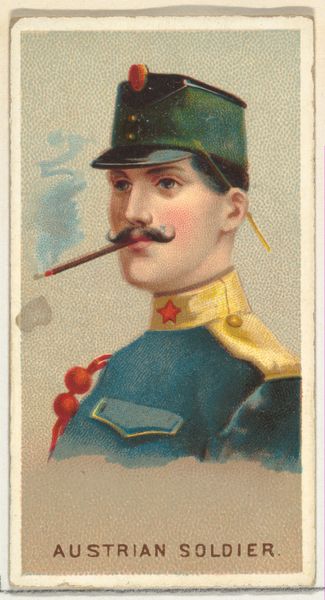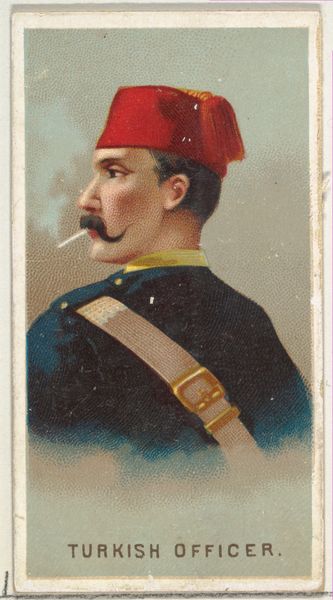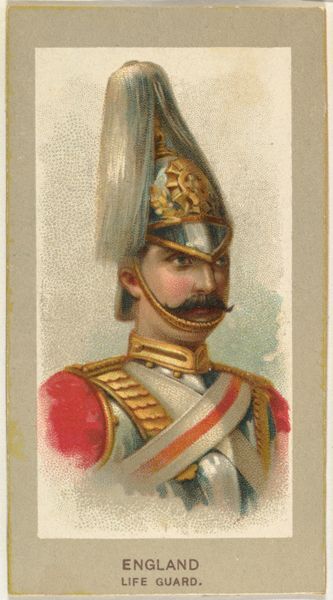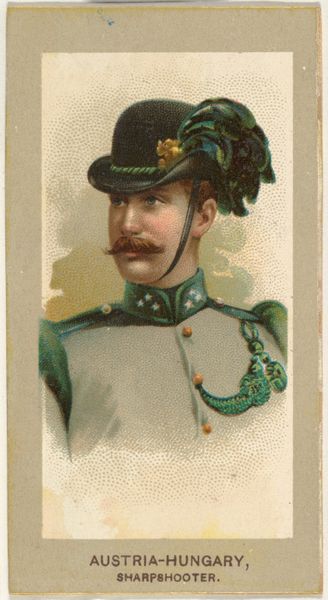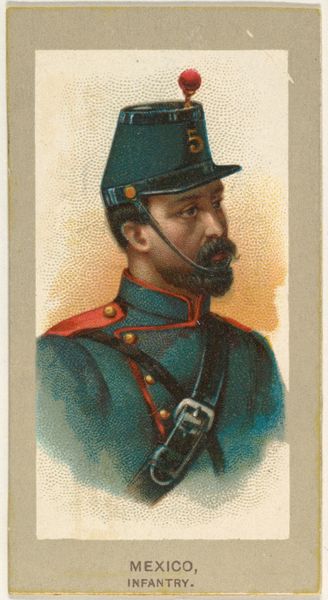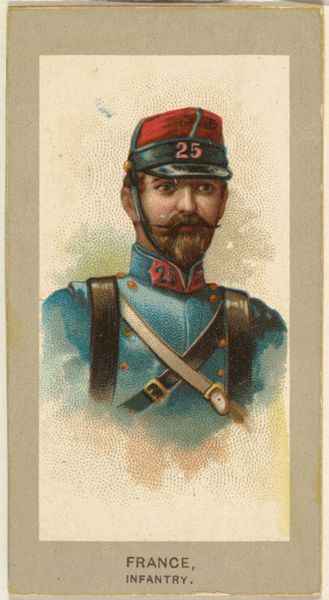
Fatigue Cap, Infantry, Germany, from the Military Uniforms series (T182) issued by Abdul Cigarettes 1881
0:00
0:00
drawing, coloured-pencil, print, watercolor
#
drawing
#
coloured-pencil
# print
#
caricature
#
watercolor
#
coloured pencil
#
men
#
watercolour illustration
#
genre-painting
Dimensions: Sheet: 3 3/16 × 1 3/4 in. (8.1 × 4.4 cm)
Copyright: Public Domain
Curator: Here we have “Fatigue Cap, Infantry, Germany,” a drawing from the Military Uniforms series issued around 1881 by Abdul Cigarettes. Editor: It has such a severe, almost comical air about it, especially given the medium. It's like a watercolor-and-pencil caricature of Prussian rigidity. Curator: Indeed. Note the meticulous detail in rendering the textures—the shako's dark sheen contrasting with the softer rendering of the soldier's uniform. The restricted palette contributes to the overall sense of restrained power. Editor: I see it as an illustration embedded within a much larger ideological project. These images naturalize militarism. I mean, consider the time: 1881, just a decade after German unification. Nation-building required images, and what's more compelling than the stoic soldier? It links the state with hypermasculinity and unquestioned allegiance. Curator: Undoubtedly, but I also appreciate the artist’s capacity to reduce a complex social phenomenon to a simple form: this one soldier representing an entire army. There is formalism within its cultural messaging. Note, also, how the eye is drawn to the very elaborate and meticulously rendered helmet. Editor: The image romanticizes warfare without showing its consequences. It erases the very human cost of conflict for German ascendancy. We must critically examine the intended message rather than solely focus on its aesthetic features. How do such representations cultivate patriotic fervor, even in consumer products like cigarette cards? Curator: Fair enough. Although in concentrating so thoroughly on symbolic interpretations, you potentially neglect the inherent design elements—the delicate symmetry, the nuanced contrasts within its visual economy, that contribute just as profoundly. Editor: But can one honestly separate design elements from ideological function? Ultimately, these drawings served particular narratives during an era of empire-building and emerging nationalism. It is far too significant to miss. Curator: Still, observing these intricacies offers an approach to understanding a period marked both by innovative technologies and deeply ingrained cultural norms. Editor: Well said; recognizing how the convergence of material conditions and human narratives forms a deeper appreciation for the function and production of these artifacts.
Comments
No comments
Be the first to comment and join the conversation on the ultimate creative platform.
